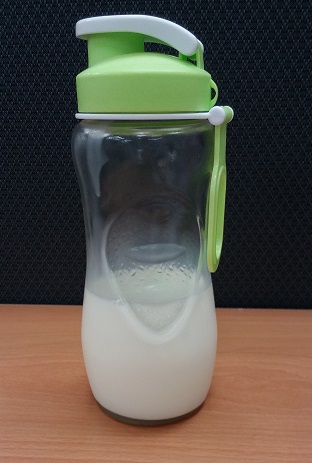
LED light will accelerate the deterioration of milk
Is your house's refrigerator equipped with LED lights? More and more fresh supermarkets and stores are equipped with LED lights, but this may be bad news for people who drink milk.
According to a US study, the amount of light exposed to sunlight, LED lights, etc. has a significant impact on milk quality. (Source: LEDinside)
Researchers at Cornell University have found that even a few hours of exposure to an LED source accelerates the rate of milk deterioration, even worse than the increased microbes in milk over time. The researchers hypothesized that the quality of milk could be maintained for two weeks without exposure to LED light. In the face of long-term storage of milk and milk that is only exposed to LED light for 4 hours and installed in a general light-transmissive container, the consumer chooses the former. As merchants begin to use energy-saving light sources such as LED lights at dairy collection and sales locations, they may unwittingly destroy the quality of dairy products.
“For some reason we like to see bottling milk glittering on the shelves,†senior researcher Robin Dandu is also an assistant professor at the Department of Food Science at Cornell University. Milk contained in these transparent containers may be attractive, but may inevitably reduce the quality of these dairy products.
It is understandable that the quality and nutritional value of milk is inversely proportional to the ratio of exposure to sunlight and artificial light sources. Riboflavin and other light-sensitive ingredients in milk become active when stimulated by light and release electrons, which can cause protein degradation and fat oxidation. The final result is the cabinet flavor or plastic taste that most people describe.
At present, the popular milk packaging on the market will be more or less transparent, and even the opaque plastic barrels used to ensure the quality of milk will inevitably deteriorate the milk.
“Consumers want to drink the freshest and best milk.†Research leader Nicole Martin, who is also the manager of Cornell’s Milk Quality Promotion Program Lab, said: “For most consumers, fresh The meaning of the product is closely related to the shelf life of the product box. This study shows that light is the key to determining the quality of milk in terms of milk quality."
The wavelength of the LED source is different from the fluorescent lamp used to illuminate the milk can. LED lamps typically emit blue light, approximately between 460 nm, and produce a relatively large central illumination wavelength. This central illuminating wavelength is close to the location where riboflavin in milk absorbs light, which is why researchers speculate on the damage to nutrients and quality in milk.
The co-author of the study, also a professor of food safety, Martin Wademan: "We found that most of the sterilized milk remained high quality for up to 14 days without exposure to LED lights. This study provides us with new information on the direction of improving milk quality; for example, using opaque packaging."
The use of LED lights as energy-saving pipes is becoming more common. Researchers recommend that milk makers switch to opaque packaging methods to minimize the effects of light.